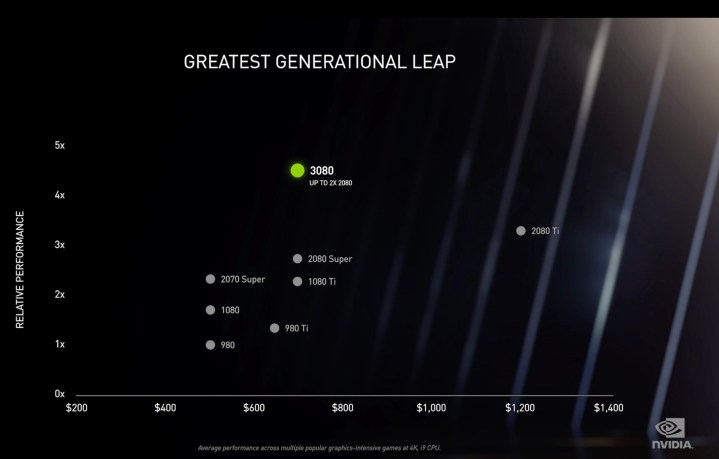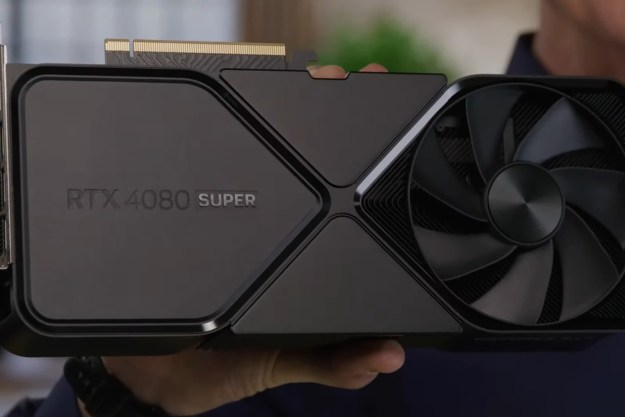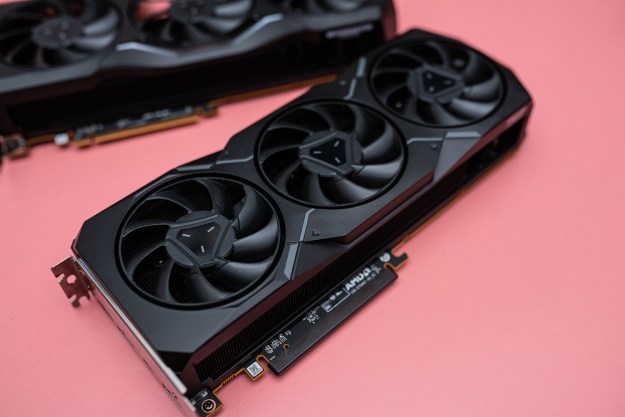Nvidia offered a small but notable late-generation refresh to its Turing cards in the form of the RTX 2080 Super in 2019. It offered a slight performance boost over the standard 2080 at the same price as its predecessor. Now, however, it’s hard to find a 2080 Super at all, much less one at a reasonable price.
The next generation of Nvidia GPUs is almost here, though, with the RTX 3080 set to replace the 2080 and 2080 Super. The 3080 is a more powerful card on paper, and it’s the same price as the 2080 Super. But is an upgrade worth it? In this Nvidia RTX 3080 versus 2080 Super comparison, we’re going to find out.
Pricing and availability

The RTX 2080 Super launched in 2019 with an MSRP of $699, though you won’t find any Founders Edition cards at that price anymore. With the advent of the RTX-3000 series, paying anything more than that, or even slightly less, is not worth it.
The RTX 3080 releases on September 17 for the same price as the 2080, $699. Board partner cards will likely be a little more expensive once they release. If Nvidia’s past launches have taught us anything, it’s that you probably won’t find a 3080 in stock right away. Prices for secondhand 2080 Supers will drop almost immediately, though.
Performance
| RTX 3080 | RTX 2080 Super | |
| GPU | Unknown | TU104 |
| Interface | PCIExpress 4.0 | PCIExpress 3.0 |
| CUDA cores | 8,704 | 3,072 |
| Tensor cores | 238 | 384 |
| RT Cores | 58 | 48 |
| Base clock | Unknown | 1,650MHz |
| Boost clock | 1,710MHz | 1,815MHz |
| Memory | 10GB GDDR6X | 8GB GDDR6 |
| Memory speed | 19Gbps | 15.5Gbps |
| Bandwidth | 760GBps | 496GBps |
| TDP | 320w | 250w |
Based on specifications alone, the 3080 looks to be massively more capable than the 2080. It should be, but not quite in the way it seems on paper.
The CUDA core count of the RTX 3080 is almost three times that of the 2080 Super. This is partly a standard increase in core count, but also because of a change in the way Nvidia designates what is, and is not, a CUDA core. The RTX 2080 Super has 3,072 floating-point (FP32) CUDA cores, and a further 3,072 integer (INT32) cores. They are both used in gaming, but FP32 more so. The RTX 3080 has 4,352 FP32 CUDA cores, and 4,352 cores that can do INT32 and FP32. That means that in FP32-heavy games, the 3080 could use all those extra cores to increase its FP32 performance, but in games that demand a lot of integer math, the core count increase is closer to 40%.
That’s still a big increase, but the actual performance improvement from those extra cores being multipurpose could be very game dependent.
In the real world, Nvidia claims that the 3080 will double the performance of the 2080, and Digital Foundry’s coverage certainly suggests that it’s possible to get close to such numbers. It found that the 3080 was between 60% and 90% faster than an RTX 2080 with a slight factory overclock, at 4K resolution and all settings on high, whether ray tracing was enabled or not. Considering the slight difference between the stock 2080 and the 2080 Super, this would make the 3080 vastly more capable than the 2080 Super, and even the 2080 Ti, by quite a margin.
The games were hand-picked by Nvidia, however, and with what we now know about the CUDA cores, that may be with good reason. The switch to a much faster GDDR6X memory, and 2GB more of it, will no doubt have helped too, but we’ll need to see some more third-party benchmarks in a wider array of games to see how much faster the 3080 really is.

Power and cooling

The 2080 Super draws 250w on the reference design, with Nvidia’s dual-fan RTX FE design cooling the card. It uses a six-pin and eight-pin connector for power, and Nvidia recommends 650w for total system power for the card. The 3080 comes with a higher power draw, 320w, and uses Nvidia’s new 12-pin low-profile power connector. Third-party cards are set to leverage traditional dual 8-pin designs, though we may see the 12-pin connector appear on more cards as supporting power supplies become more widely used.
Where those same board partners will use their typical array of multi-fan and water-cooling designs to cool custom RTX 3080s, Nvidia has revamped its Founders Edition cooling for the Ampere generation. The 3080 and 3090 use a new, push-pull fan configuration to get extra air into the card and push it out the top and rear. This, we’re told, improves cooling performance and allows for reduced noise levels.
Again, we’ll need to wait until we get our hands on a card, but Nvidia’s design is intriguing and makes the Founders Edition cards even more attractive an option for early adopters.
Ray tracing, DLSS, and more

The 3080 pushes the features of the 2080 Super further rather than introducing much of its own. DLSS 2.0 is available on both cards, offering higher resolutions through Nvidia’s deep learning algorithm, though the RTX 3080 leverages a new generation of tensor cores to deliver far greater upscaling performance.
Ray tracing is present on both cards, too, but the 3080’s second-gen RT cores should provide better ray-tracing performance at higher resolutions. With ray-tracing support in the PS5 and Xbox Series X, we’ll likely see an uptick in games that support the feature. Here are all the games that support Nvidia’s RTX-driven
Nvidia Reflex is a tool within recent that speeds up gameplay performance by reducing the time it takes to load information into the system. Both the 2080 Super and the RTX 3080 will have this feature, but neither will have Nvidia’s RTX I/O. It enables the RTC 3000 GPU to deal with asset decompression within the game, permitting quicker asset loading on the system’s storage and decreased pop-in during gameplay. It can also reduce CPU overhead.
The next-gen leap
The 3080 represents a crucial shift in Nvidia GPU’s prioritization of transparency at this point in their ongoing production. The 3080 is proof that the future Nvidia GPU generation is about clarification. RT’s cores perform 1.7x better than Turing, GDDR6X enhances bandwidth and the speed of memory, and the 3080 has twice the number of CUDA cores compared to the Titan RTX. The Titan RTC already had many more capabilities than the competing 2080 Super. The 3080, along with all of these models, are equal in cost to the 2080.
Recommending a 2080 Super isn’t easy right now, given the grossly inflated costs and decreased availability. If you don’t have too much money to spend, you could always shop around for a used 2080 Super as their second hands status significantly reduces their prices. However, studying raw performance alone demonstrates that the 3080’s features are capable of outperforming the 2080.
Editors' Recommendations
- Nvidia RTX 50-series graphics cards: news, release date, price, and more
- CableMod’s adapters damaged up to $74K worth of Nvidia GPUs
- This underrated AMD GPU beats the RTX 4070 Ti Super
- Nvidia’s RTX Video can upscale blurry YouTube videos
- Watch out — fake RTX 4090s are being sold on Amazon





